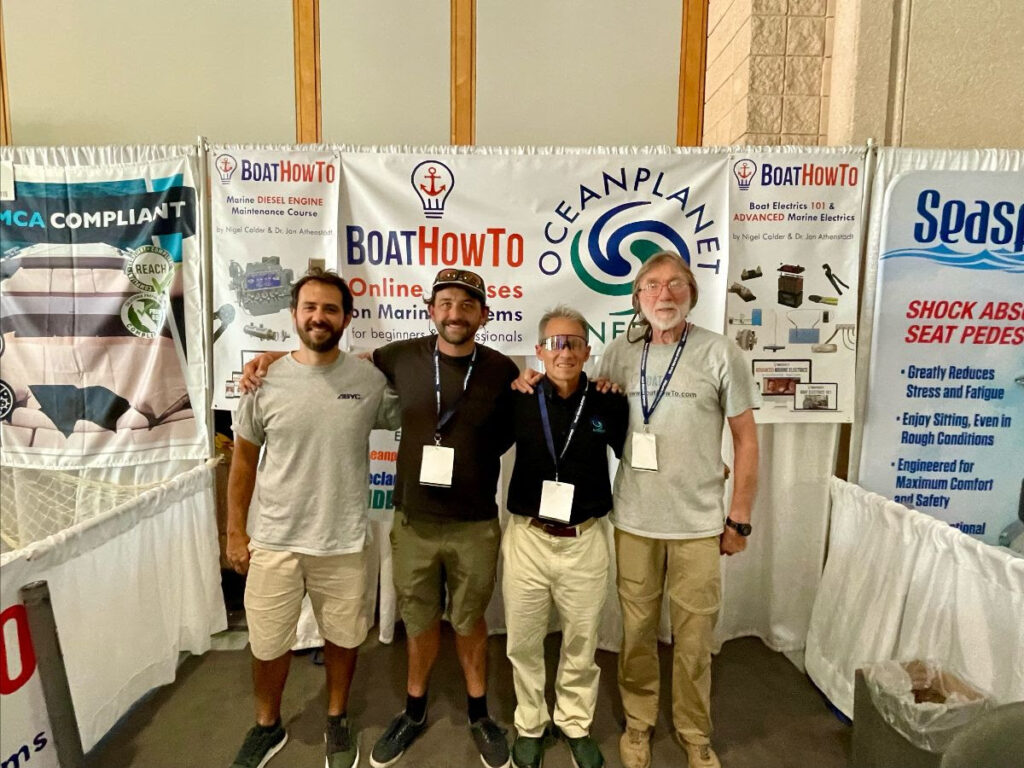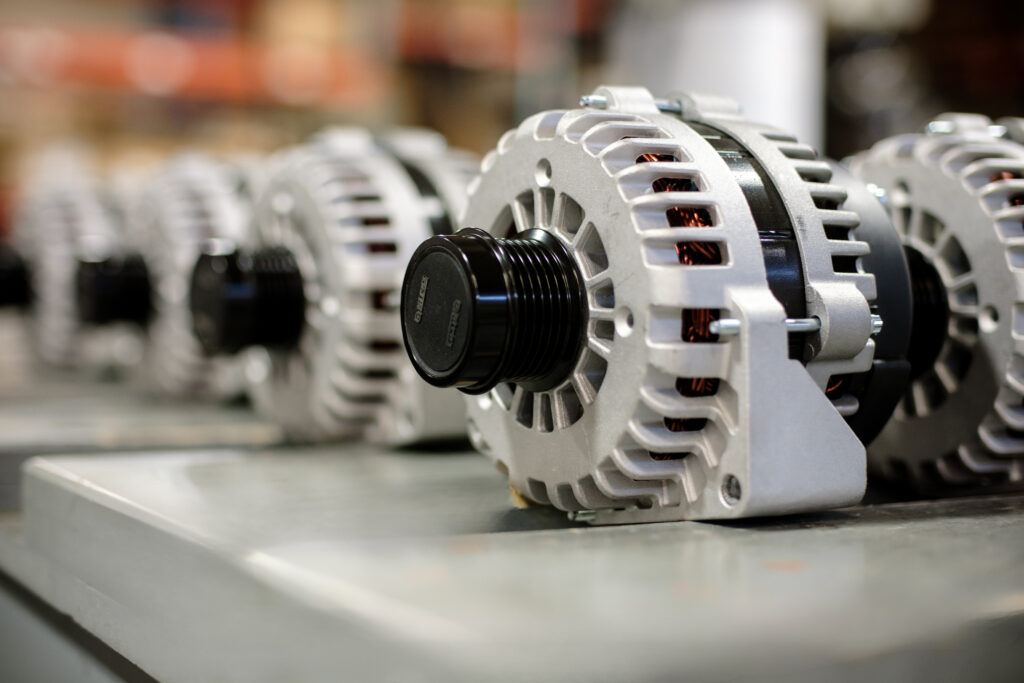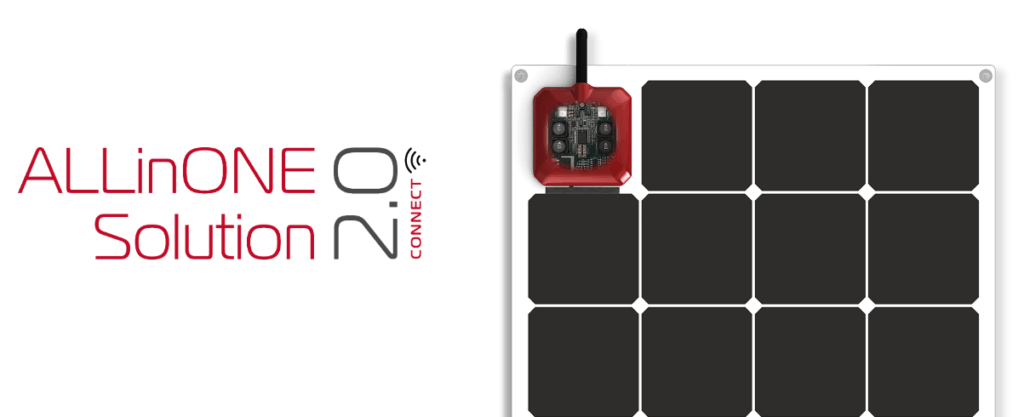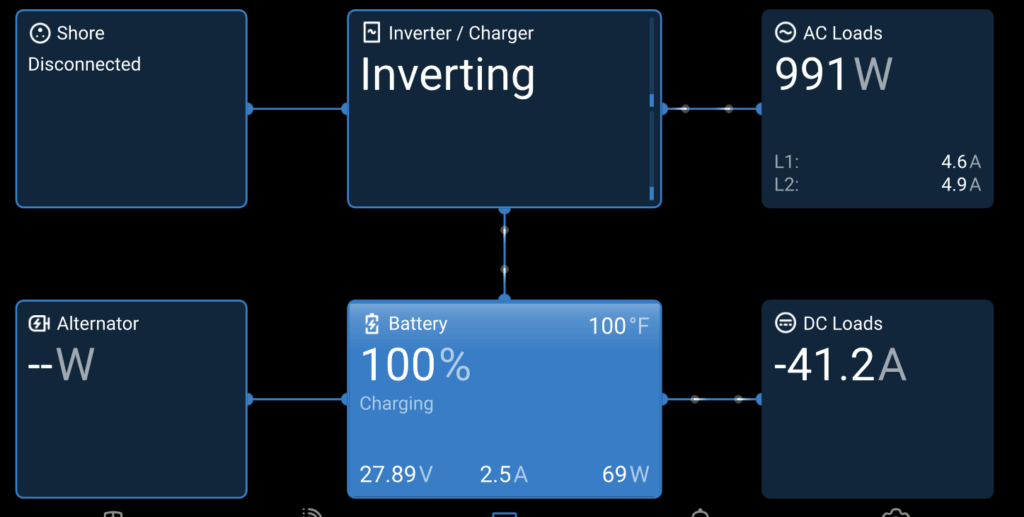 OceanPlanet Energy – Fall Newsletter |
 |
| Another summer has passed here in Maine, but fall is still one of the best times out on the water. While we’re working on hauling and winterizing, now is a great time to mull over improvements you want for next season. We have some really awesome new products we’re excited to get out into the marine market! |
| OceanPlanet Energy goes to IBEX 2025! |

| Earlier this month, OceanPlanet Energy joined Nigel Calder and Boat How-To at IBEX, the marine industry trade show in Tampa. Always a whirlwind, we were glad to connect with an incredible group of folks who continue to push the marine industry forward in technology, efficiency, and safety. Joining the Boat How-To team from Brazil was Pedro Rodriguez, an ABYC Master Technician who is expanding the Boat How-To courses into Brazilian Portuguese! |
OceanPlanet Energy and Boat How-To submit entries to the IBEX Innovation Awards
OceanPlanet Energy was proud to introduce the new American Power Systems UPI alternator, a breakthrough in alternator charging. The UPI offers enhancements over the popular and powerful HPI series, including more power at low RPM AND throughout the power curve. An impressive achievement by the engineers at APS! Read more on the UPI alternator below!
-Boat How-To’s new Diesel Engine Maintenance Course, which offers a deep-dive into marine diesel care and maintenance, packed full of information from basic theory to advanced troubleshooting. Building off of the success of the Marine Electrical Courses, the new Diesel Engine course is offered as a one-time purchase with unlimited access to the lessons and discussions presented in them.
Read more about the Boat How-To Diesel Course here

The UPI Alternator from American Power Systems, Inc and OceanPlanet Energy
| After years of development and testing, APS and OPE are now introducing the UPI or Ultra Performance at Idle series. Ultra Performance at Idle (UPI) High Output Alternators The UPI series is a next-generation line of alternators based on the original HPI series. The UPI alternators share the same weight, size, and other mechanical specifications as the HPI versions but with higher outputs at both the upper and lower ranges of the RPM output curve and even higher efficiency. The UPIs have similar case options to fit in the stock (or secondary) alternator position on a range of marine diesels. Get faster charging from American Power Systems The increased power output at lower RPM has been a core request of OPE. It translates to quicker battery charging at idle and low propulsion speeds, and especially at anchor. Another OPE request has been to subject the UPI alternators to the most rigorous testing in the industry – what is known as a saturated dwell test at 100°C temperature – allowing for meaningful hot output numbers that closely mimic real-world use. OPE also stocks secondary alternator kits for Yanmar 4JH and Volvo-Penta D2 engines, as well as high-output alternators for the popular Yanmar 4LV and 8LV engines. Available in 12-, 24-, and 48-volt models, the UPI series offers six different configurations ranging from 165 amps to 390 amps of output, for Yanmar, Volvo-Penta, Cummins, John Deere, Caterpillar, and others. UPI Output Comparison Sheet HPI Output Comparison Sheet HPI and UPI Fitment Guide |

Solar Product Launch – the new
All-in-One 2.0 panels

| Solbian, makers of the world’s finest semi-flexible solar panels and based in Italy, has announced the new controllers and web interface for the Solbian All-in-One panels, the All-in-One 2.0! This massive upgrade provides a web interface to custom program your All-in-One panels for a multi-step charge algorithm with custom parameters for your specific batteries. LiFePo4, AGM, and FLA battery ready, the AiO 2.0 is a complete (all-in-one) package featuring Solbian’s super high-efficiency solar cells and an integrated, customizable MPPT buck/boost charger. AiO-7 (23w) panels are in stock, and AiO-15 (49w) are available for order. Forex and Grommets are typically ordered standard for a solid, portable solution. The new All-in-One is PERFECT for charging and maintaining batteries for your small sailboat, outboard engine start battery, golf cart, or even a hydraulics battery on a trailer. Wherever you need reliable power in a small package, the AiO can deliver. Contact sales@oceanplanetenergy.com for more information |
Do you know your electrical consumption?
Figuring out how much energy you use is key to designing the right system

Whether for a boat, RV or van, or an off-grid home or cabin, our Load Calculator can help you effectively understand, design, and monitor your electrical systems.
If you’re thinking about a larger electrical system upgrade in the future, now is a great time to start collecting numbers on your energy usage. A load study of all the electrical consumers (AC and DC) on your boat is a great first step for figuring out what you want and need, from minor projects to major electrical refits.
While it might seem complicated, it’s actually pretty simple – and this information is vital for designing a powerful, safe, and optimized energy system.
The goal is to quantify the energy consumption of each load (or group of loads) on your boat, as well as the peak loads and the most demanding scenario. This can be done several ways – an existing system battery monitor that can measure current (amps), or a good multimeter with an amp clamp. Many devices will also have a label that can contain some electrical information. The amount of power consumed by the device is multiplied by the numbers of hours it is on during the day.
Simply turn off all chargers (including solar) and loads, and then individually turn on items and see the amps the device is consuming. If you’re using a multimeter instead of the system battery monitor, you can measure the consumption of individual items by putting the amp clamp around the wire lead (positive or negative – not both).
Some loads may be “bundled” – for example, “cabin lights” instead of the individual lights. And some loads, like the VHF, use little power when receiving, but more when transmitting, so it can be important to get both. Granularity in detail isn’t usually as important as a comprehensive idea of electrical consumption.
Typically, but not always, sailboats consume more power when underway than when at anchor. With radar, AIS, chartplotters, navigation lights, autopilot, and so on, these numbers can really add up. Autopilots can be surprisingly large consumers, and can have varying loads depending on sea conditions. It’s best to use the scenario where the system is using the most power, to avoid surprises at sea.
If you have an inverter for AC loads, or would like one, understanding the peak and normal AC demands is very important for sizing the inverter and the battery bank. This should also be included. If you don’t have any AC consumers, or only want to run them when connected to shore power or the generator, they don’t need to be listed for this load study.
A completed load study can help us size the appropriate battery bank, voltage, and chemistry for your system, as well as other components such as chargers and inverters. Beyond being helpful for us and installers, it’s a vital avenue for understanding your own electrical system and how to properly manage it.

| Expand your knowledge! Take your marine electrical system knowledge to the next level with these in depth courses brought to you by Nigel Calder and Dr. Jan C. Athenstädt. Not only is it full of extremely useful information, it’s also fun and easy to follow along! We can’t recommend this course enough for building your knowledge of the basics of electrical systems. |
 |

Leave a Reply